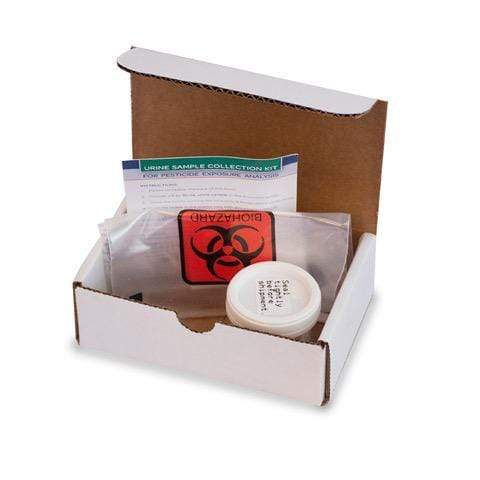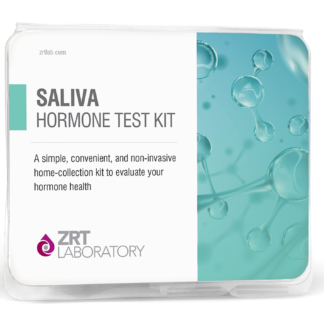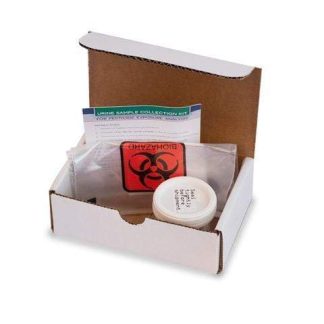Description
Glyphosate Toxicity Testing – Home Urine Test
Note: This is a home collection urine test kit that will be mailed to you.
This test is non-refundable once ordered.
Doing this test will help you determine your level of Glyphosate Toxicity so that appropriate homeopathic detox remedies can be used to clear the body of glyphosate.
Fasting: No
Lab: Mosaic Diagnostics, USA
Specimen: Urine, first morning urine before food and drink is preferred.
Results: Average processing time 7-14 days
Note: Result turnaround times are an estimate and are not guaranteed.
The lab may need additional time due to weather, holidays, confirmation/repeat testing, or equipment maintenance.
The lab may need additional time due to weather, holidays, confirmation/repeat testing, or equipment maintenance.
Special Instructions: Collect the first morning urine in the collection cup provided. Collecting sample prior to eating or drinking is preferred. Freeze urine specimen for a minimum of 4 hours before shipping. Keep in freezer until ready to ship. Ship with frozen gel pack (included). Send the sample Monday through Thursday only. Do not collect during menstrual cycle. Limit liquid intake starting at 6pm the night prior to collection to avoid sample dilution. Urine must be yellow in color. If urine is clear the sample is too diluted. Discard diluted sample, rinse the collection cup in hot water only (no soap), air dry, then re-collect.
Glyphosate is the world’s most widely produced herbicide and is the primary toxic chemical in Roundup™, as well as in many other herbicides.
- Glyphosate is a broad-spectrum herbicide that is used in more than 700 different products from agriculture and forestry to home use.
- Glyphosate was introduced in the 1970’s to kill weeds by targeting the enzymes that produce the amino acids tyrosine, tryptophan, and phenylalanine.
- The enzymes of many bacteria are also susceptible to inhibition by this chemical, thus altering the flora of many animals.
- Usage of glyphosate has since amplified, after the introduction of genetically modified (GMO) glyphosate-resistant crops that can grow well in the presence of this chemical in soil.
- In addition, toxicity of the surfactant commonly mixed with glyphosate, polyoxyethyleneamine (POEA), is greater than the toxicity of glyphosate alone (1).
- In addition, in 2014 Enlist Duo™, a herbicide product which contains a 2,4-dichlorophenoxyacetic acid (2,4-D) salt and glyphosate, was approved for use in Canada and the U.S. for use on genetically modified soybeans and genetically modified maize, both of which were modified to be resistant to both 2,4-D and glyphosate. 2,4-D has many toxic effects of its own and can be measured in the GPL-TOX test.
- Recent studies have discovered glyphosate exposure to be a cause of many chronic health problems.
- Glyphosate can enter the body by direct absorption through the skin, by eating foods treated with glyphosate, or by drinking water contaminated with glyphosate.
- A recent study (2) stated that a coherent body of evidence indicates that glyphosate could be toxic below the regulatory lowest observed adverse effect level for chronic toxic effects, and that it has teratogenic, tumorigenic and hepatorenal effects that can be explained by endocrine disruption and oxidative stress, causing metabolic alterations, depending on dose and exposure time.
- The World Health Organization International Agency for Research on Cancer published a summary in March 2015 that classified glyphosate as a probable carcinogen in humans (3).
- Possible cancers linked to glyphosate exposure include non-Hodgkin lymphoma, renal tubule carcinoma, pancreatic islet-cell adenoma, and skin tumors. Studies have also indicated that glyphosate disrupts the microbiome in the intestine, causing a decrease in the ratio of beneficial to harmful bacteria (4).
- Thus, highly pathogenic bacteria such as Salmonella entritidis, Salmonellagallinarum, Salmonella typhimurium, Clostridium perfringens, and Clostridium botulinum are highly resistant to glyphosate but most beneficial bacteria such as Enterococcus faecalis, Enterococcus faecium, Bacillus badius, Bifidobacterium adolescentis, and Lactobacillus spp. were found to be moderately to highly susceptible.
- The relationship between the microbiome of the intestine and overall human health is still unclear, but current research indicates that disruption of the microbiome could cause diseases such as metabolic disorder, diabetes, depression, autism, cardiovascular disease, and autoimmune disease.






